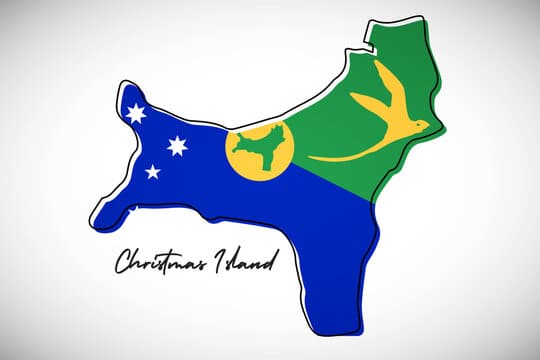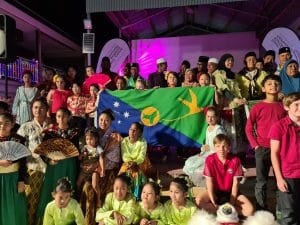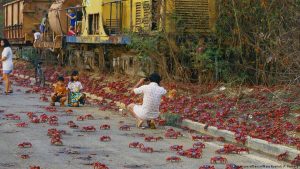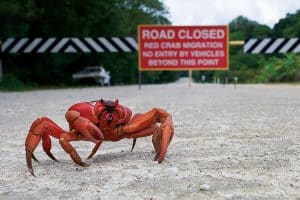Headlines
Christmas Island Population, Official Language And More.

It was first settled in the late 19th century, after the discovery of phosphate deposits, which became the main economic activity for the next 100 years. The island has a diverse population of people from different ethnic and cultural backgrounds, including Chinese, Malay, European and Australian. The island is also known for its annual red crab migration, which attracts many visitors and researchers.

Christmas Island

Christmas Island

Christmas Island
The Population
Christmas Island has a population of about 1,800 people, according to the 2016 census.
The majority of the residents are of Chinese (65%), Malay (20%) and European (12%) descent.
The islanders are Australian citizens and have the same rights and responsibilities as other Australians.
The Landmarks
Christmas Island has many natural and historical landmarks that attract visitors and researchers.
Some of the natural landmarks are the Dales, which are freshwater streams and pools in the rainforest; the Blowholes, which are holes in the limestone cliffs that spray water; and the Grotto, which is a cave with a pool and stalactites.
Some of the historical landmarks are the Flying Fish Cove, which is the main settlement and port; the Phosphate Hill, which is the site of the phosphate mining operations; and the Tai Jin House, which is a former residence of the British governor.
The Official Language
English is the official language on Christmas Island. However, more than half of the residents speak a language other than English at home.
While on the island, you might hear people conversing in Mandarin, Malay, Cantonese, Min Nan, Tagalog and a variety of other languages.
The island also has its own creole language, called Christmas Island English, which is influenced by Chinese and Malay languages.
The Culture
Christmas Island is a vibrant and warm community with a cultural mix that colours island life with many traditions, celebrations and festivals.
Islanders are proud of their home and its harmony with a blend of Buddhist, Christian, Taoist and Muslim cultures.
Some of the cultural events that take place on the island are the Chinese New Year, the Hari Raya Puasa, the Hungry Ghost Festival, the Deepavali and the Christmas Day.
The Economic Stability
Christmas Island’s economy is mainly based on phosphate mining, tourism, government services and immigration detention.
The phosphate mining industry has been declining due to environmental concerns and market fluctuations. The mine leases on Christmas Island end in 2034.
The tourism industry has been growing due to the island’s natural beauty and wildlife attractions. However, it faces challenges such as limited infrastructure, accessibility and promotion.
The government services sector provides employment and income for many islanders. However, it also depends on federal funding and policies.
The immigration detention centre has been a controversial issue on the island. It has brought economic benefits but also social and environmental costs.
The GDP
Christmas Island does not have a separate GDP figure from Australia, as it is an external territory of Australia.
However, according to the Australian Bureau of Statistics, the gross state product (GSP) of Western Australia, which includes Christmas Island, was $266.9 billion in 2019-20.
The main contributors to the GSP were mining, construction, health care and social assistance, and professional, scientific and technical services.
The Currency
The currency used on Christmas Island is the Australian dollar (AUD).
The Australian dollar is divided into 100 cents and has banknotes of $5, $10, $20, $50 and $100, and coins of 5c, 10c, 20c, 50c, $1 and $2.
The exchange rate of the Australian dollar varies depending on the market conditions and the performance of the Australian economy.
The Food
Christmas Island has a diverse and delicious cuisine that reflects its multicultural heritage and tropical location.
The island has a number of restaurants and cafes that offer Chinese, Malay, Indian, Thai and Western dishes, as well as local specialties such as red crab curry, coconut crab salad and pickled egg.
Some of the common ingredients used in the island’s food are seafood, rice, noodles, coconut, spices, herbs and fruits.
Major Cities
Christmas Island does not have any cities, but it has several settlements where most of the population lives.
The largest and most important settlement is Flying Fish Cove (also known as Kampong or The Settlement), which is located on the north-eastern coast of the island. It is the main port, administrative center and tourist hub of the island.
Other settlements include Poon Saan (also known as Kampong Poon Saan or Poon Saan Village), which is located on the north-western coast of the island. It is the second largest settlement and has a predominantly Chinese community. Drumsite (also known as Kampong Drumsite or Settlement B), which is located on the south-eastern coast of the island. It is a residential area that was built for the phosphate mine workers. Silver City (also known as Kampong Silver City or Settlement C), which is located on the south-western coast of the island. It is another residential area that was built for the phosphate mine workers.
Major Airport, Sea Port and Schools
The major airport on Christmas Island is Christmas Island International Airport (IATA: XCH, ICAO: YPXM), which is located near Drumsite. It has a single runway that can accommodate large jet aircraft. It offers regular flights to Perth, Jakarta and Cocos (Keeling) Islands.
The major sea port on Christmas Island is Flying Fish Cove Harbour, which is located in Flying Fish Cove. It has a jetty that can handle cargo ships and passenger vessels. It is also a popular spot for fishing, snorkeling and diving.
The major schools on Christmas Island are Christmas Island District High School (CIDHS), which is located in Flying Fish Cove. It provides education from kindergarten to year 12 for about 300 students. And Christmas Island Islamic School (CIIS), which is located in Poon Saan. It provides education from kindergarten to year 6 for about 50 students.





